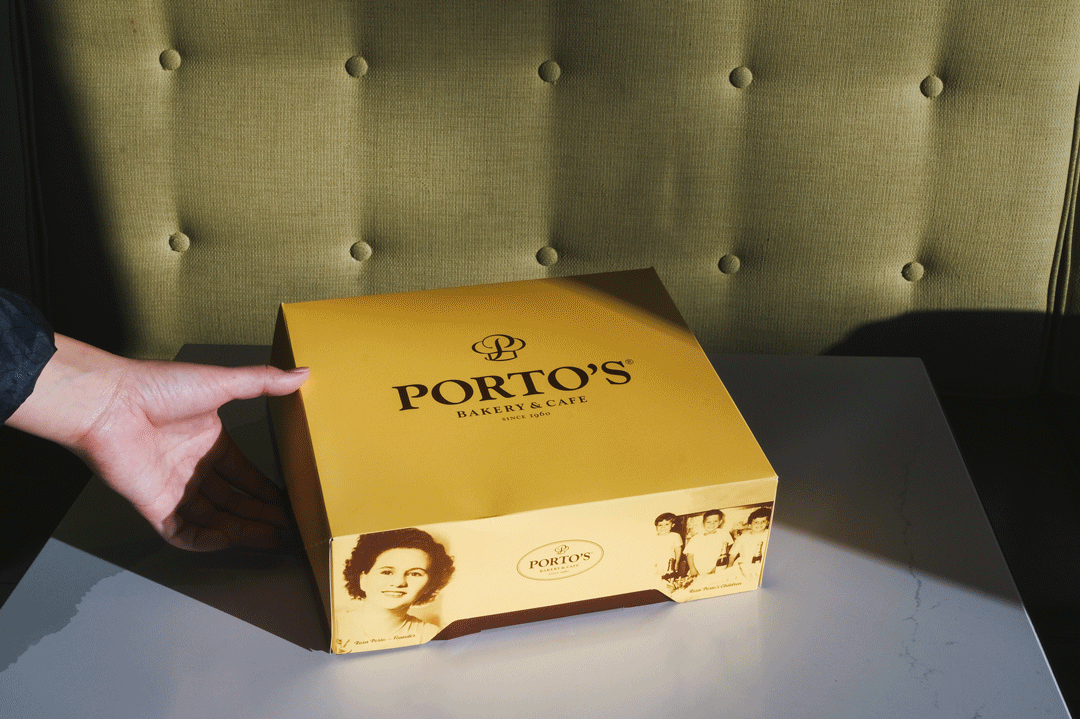Porto, Portugal, turns on the charm, pours forth history
PORTO, Portugal â Second cities tend to be like people with an inferiority complex, carrying with them a real or perceived belief that they cannot compare with their older, more intriguing and sophisticated siblings: Chicago versus New York. Liverpool versus London.
In Portugal it is the opposite. Porto, the nationâs second-largest city, has all the history, charm and sophistication of Lisbon without the crowds, congestion and price-gouging taxi drivers.
Business brought me to Lisbon in February, but after deciding to take a few vacation days, my interests in history, architecture and religion led me to Porto, about a three-hour drive north. In 2014 a regional travel organization named Porto one of the best European destinations.
âIt is a town with lots of uphill and downhill, each corner provides, constantly, surprise effects,â said Paulo Amaral, an archaeologist who coordinates activities for visitors to some of Portoâs local monuments.
You wonât find many of what Amaral called âsurprise effectsâ in travel guides, although they add significantly to the character of this city of 1.4 million, first inhabited by Romans in the 4th century. During my four days here, I observed several âsurprise effects,â the memories of which will linger for years.
I met Amaral on a drizzly Sunday afternoon at Mosteiro da Serra do Pilar, a 16th century monastery on a cliff overlooking the city, the Douro River and its confluence with the Atlantic Ocean a few miles west.
I encountered one of those surprises on Amaralâs tour of the monastery, where the architecture is a mixture of African, South American and Iberian influences. It was a statue of a saint with a gaping hole where one arm had been severed by vandals. They were among Napoleon Bonaparteâs troops who occupied the monastery between 1809 and 1811.
For Napoleon, Amaral said, âReligion was an enemy to eliminate.â Napoleon believed that if images of the church were defiled, its influence over people would decrease. That statue, more than the beautifully preserved altars with icons of Christ and the Virgin Mary, provides visitors a sense of history as well as the struggle between the church and state for peopleâs hearts and minds.
With its strategic location, the monastery afforded Napoleonâs troops a place of control over Porto and the Douro River, and whoever controlled those controlled the north of Portugal.
I left the monastery and walked back across the Dom LuĂs I Bridge, designed in the 1880s by a protĂŠgĂŠ of Gustave Eiffel. The cityâs Ribeira district, a UNESCO World Heritage site, was beckoning, and Amaral inspired me to further explore this urban center, preserved from the Middle Ages.
âYou can feel there the most authentic ambience of Porto,â Amaral said. âIt is the part of town where you can feel an intimate sensation of old town in the authenticity in the behavior of the inhabitants, the narrow alleys, the little squares and the small restaurants, where you can taste traditional local cuisine.â
Here are some must-sees in Porto:
For anyone with even a slight interest in art, history or architecture, here are four sights in Porto not to be missed:
SĂŁo Bento Railway Station: Visitors who travel to Porto by rail are rewarded with murals of 20,000 hand-painted tiles depicting naval battles and other historic scenes. On a recent Saturday morning, dozens of visitors, with no apparent plans to purchase train tickets, stared at the walls and ceiling in awe, capturing photos and selfies for friends back home.
The catacombs of Igreja de SĂŁo Francisco: Every tour book highlights the 15th century Church of St. Francis and its altars, statues and other religious icons supposedly gilded with more than 400 pounds of gold. But just across from the church entrance is the 18th century St. Francis Museum, with its catacombs, a below-ground cemetery that inspires a macabre-like reverence for the more than 2,000 people said to be buried there in crypts. Be sure to examine the beautifully restored alms boxes, probably several hundreds of years old.
Livraria Lello: This bookstore, rated third best in the world by Lonely Planet a few years ago, has a stunning stained-glass ceiling, a red-carpeted wooden staircase and a banister crafted in the Gothic style. It stocks some English titles, though most patrons seem interested in taking photographs. Info: 144 Rua das Carmelitas.
Serralves Museum and Cultural Center: This 45-acre site, about a 15-minute taxi ride outside Portoâs historic district, attracts more than 300,000 visitors annually. I enjoyed walking through the well-kept gardens, having a snack in the tea house and admiring a different kind of architectural wonder: a round, three-story bird condominium. Info: www.serralves.pt/en/
A toast to Porto, Portugalâs famous export: port
Porto and northern Portugal have been identified for more than 400 years with port wine, their most popular export. That popularity resulted from a tenet familiar to any college freshman studying economics: supply and demand.
In the mid-1600s a minister to King Louis XIV restricted Englandâs exports to France, prompting Britainâs Charles II to raise fees on French wines imported to England. British royalty, let alone commoners, needed a new source of libations and sought the Portuguese to help fill their flasks.
At that time, the 557-mile Douro River afforded a vital connection, enabling boats to bring vats of wine from vineyards upstream to Porto and then to the Atlantic for the long voyages to cities in England and elsewhere in Europe.
Today, replicas of those boats sway with the riverâs currents in Portoâs harbor, providing a backdrop for touristsâ photographs as they sip port wine in cafĂŠs, restaurants and wine-tasting âlodgesâ along the waterfront. Numerous stores offer various types of port and, of course, there is the Museu do Vinho do Porto, the port wine museum, in a refurbished 18th century warehouse along the river.
Portugalâs favorite son: Henry the Navigator
Portoâs best-known native is Dom Henrique de Avis, Duke of Viseu, better known as Henry the Navigator, even though there is little evidence he lived in the city very long. He is credited with fostering the Age of Discovery, that period from the 15th through 18th centuries when Europeans explored the world, navigating and, to a degree, exploiting those they encountered, as evidenced by the African slave trade.
He was born in 1394, the son of King John I and Philippa, sister of King Henry IV of England. Henryâs birthplace, Casa do Infante, was built 40 years earlier just a few yards from the banks of the Douro River and served as a customs house, mint and accommodations for the royal family. Records of his baptism, including the festivities expenses, are preserved at the site, which today beckons visitors and researchers studying Portugalâs maritime history as well as this man who personified it.
âPrince Henry was the first who revealed new seas and lands to the 15th century man,â said Helena Gil Braga, chief of Portoâs Historical Archives Division. âThe infante [prince] was the principal author of the maritime enterprise that enabled the exploration of the West African coast and the Atlantic islands. He demonstrated revealed persistence, courage, tenacity, knowledge and experience.â
In April the city christened a new Henry the Navigator Interpretive Center that, Braga said, âwill also accentuate the role of the Portuguese in the dissemination of knowledge and culture, from Africa to China, in the 14th and 15th centuries.â
Interestingly, the âHenry the Navigatorâ moniker was never used during his lifetime but was coined in the mid-to-late 1800s by German historians. But many in Portugal, including Braga, still refer to him as infante.
::
If you go
THE BEST WAY TO PORTO, PORTUGAL
From LAX, US Airways, United, Air France, Lufthansa, KLM, British and Delta offer connecting service to Lisbon. Restricted round-trip fares from $1,217 to $1,755, including taxes and fees. Lufthansa, United, Virgin America, American, Delta, Swiss and Air France offer connecting service to Porto. Restricted round-trip fares from $1,237 to $1,939, including taxes and fees. Another option is taking the train or bus from Lisbon â about two to three hours â and enjoying views of rolling hills, vineyards and small towns. Round-trip bus fare is about $30, and you arrive just two blocks from the cityâs historic Ribeira district.
TELEPHONES
To call the numbers below from the U.S., dial 011 (the international dialing code), 351 (country code for Portugal), 22 (the area code) and the local number.
WHERE TO STAY
Mercure Porto Centro Hotel, 116 Praça da Batalha; 204-3300, www.lat.ms/1N0uhpI. Comfortable hotel with Wi-Fi in historic district; rates for two, including hot breakfast buffet, is $90.
Intercontinental Porto, 25 Praça da Liberdade, Porto; 003-5600, www.lat.ms/1J8ZIPZ. Luxury accommodations in renovated 18th century palace. Doubles from $212.
Pestana Porto, 1 Praça da Ribeira, Porto; 210-4017, www.lat.ms/1GIIzua. Lovely setting on the Douro River in the heart of historic Porto. Doubles from $137.
Unlike the U.S., many hotels in Portugal are not smoke-free. Be sure to specify you preference.
WHERE TO EAT
Majestic CafĂŠ, 112 Rua Santa Catarina, Porto; 200-3887, cafemajestic.com. Dinner entrees from $21.
CafĂŠ Guarany, 85/89 Avenida dos Aliados, Porto; 332-1272, www.lat.ms/1d4C6hc. Dinner entrees from $18.
TO LEARN MORE
Porto City Council, www.visitporto.travel/
Go Oporto, an online source for visitors: www.gooporto.com
-
MORE:
Reviving a faded resort past with art, amusements in Margate, England
A secret range of stunning mountains? Hikers, meet Slovakiaâs High Tatras
Feeling like royalty in the majestic Old City of Luxembourg
On Swedenâs rocky west coast, a solid setting for stories
Weekend Escape: Everythingâs bigger at the Big Texan Steak Ranch in Amarillo
More to Read
Sign up for The Wild
Weâll help you find the best places to hike, bike and run, as well as the perfect silent spots for meditation and yoga.
You may occasionally receive promotional content from the Los Angeles Times.





